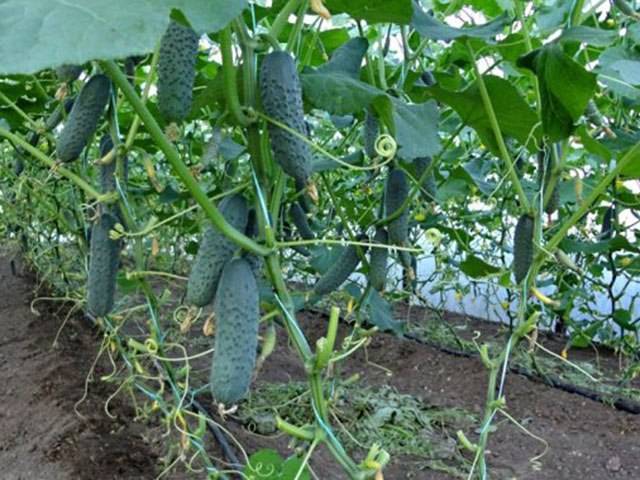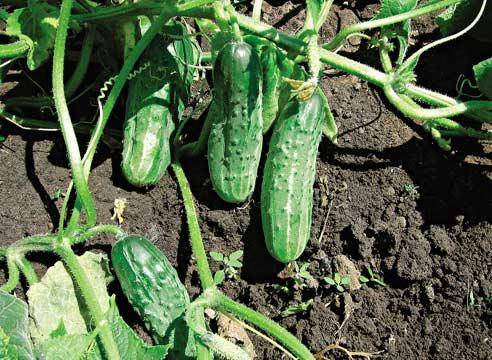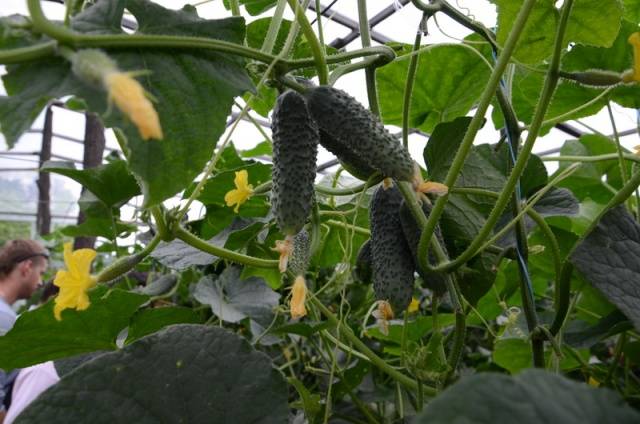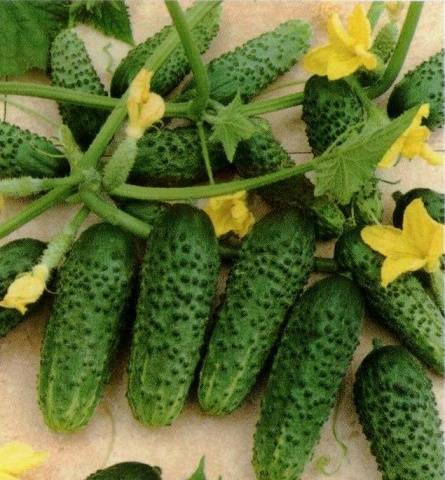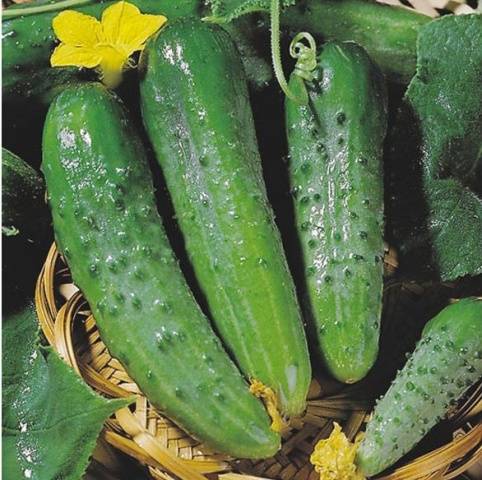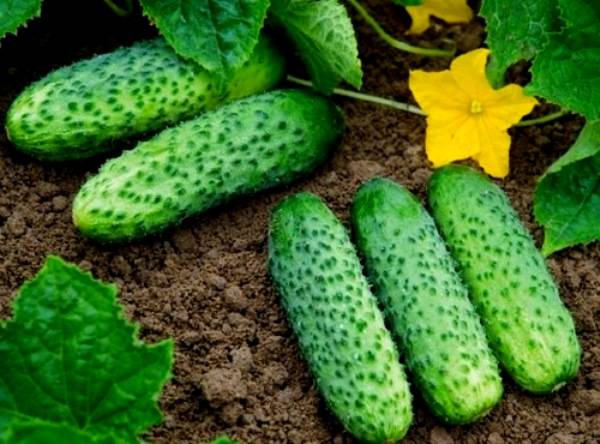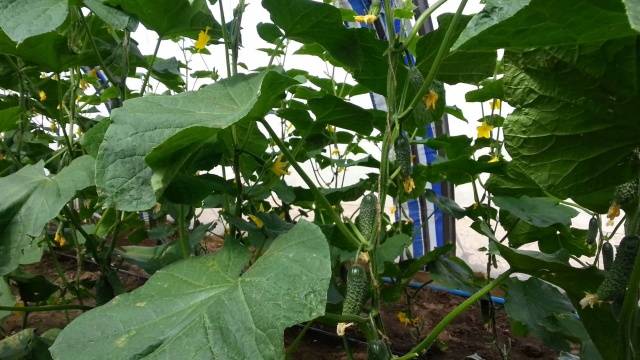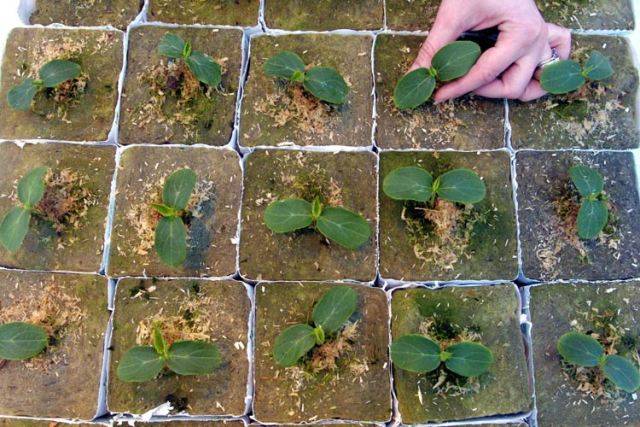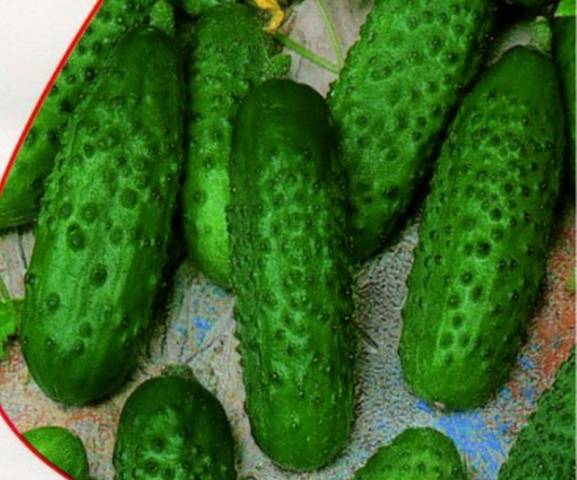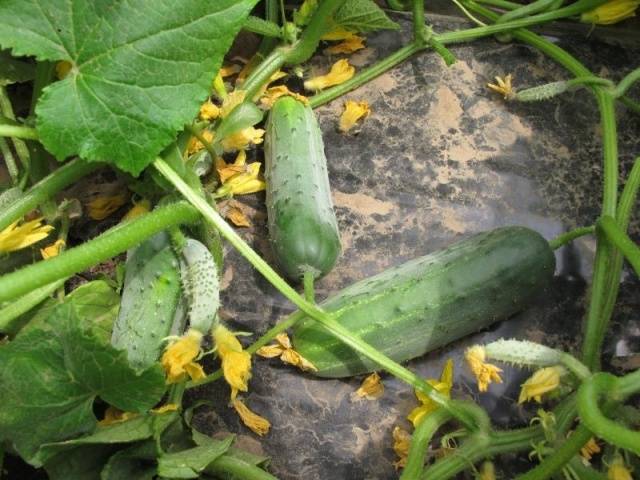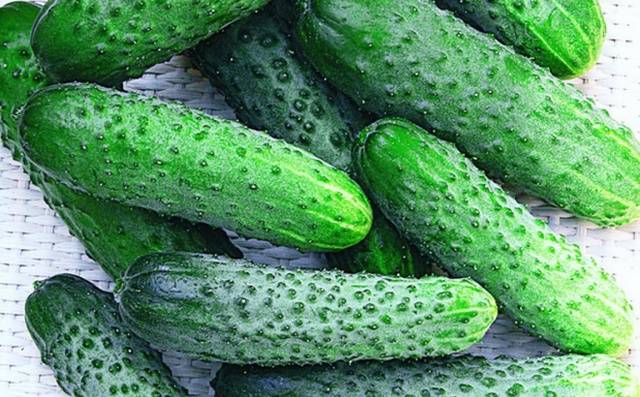Content
- 1 What varieties to choose for a greenhouse
- 2 Possible uses of the cucumber crop
- 3 What are the most productive varieties
- 4 The best early ripening varieties
- 5 Dutch cucumber seeds for greenhouses
- 6 Which varieties from Dutch breeders are better
- 7 The most delicious cucumbers in greenhouses and greenhouses
- 8 Conclusion
The best way to get an early harvest of cucumbers is to grow them in greenhouse... But in order to collect even and tasty cucumbers in early spring, it is very important to choose the right variety of them. Most often, for growing in a greenhouse parthenocarpic and self-pollinated breeding species are selected. Consider the main selection criteria and the advantages of planting certain varieties.
What varieties to choose for a greenhouse
Gardeners who have long been involved in growing vegetables in greenhouses and hotbeds will immediately say that the best varieties of cucumbers for early maturation, these are self-pollinated hybrids. This selection species perfectly adapts to environmental conditions, shows high yields and resistance to many diseases typical for greenhouse cultivation. In order for a plant to be pollinated in a greenhouse, the presence of bees is not at all necessary, as is the case in open beds of a vegetable garden.
Before you start buying seeds, decide what exactly you will use the resulting crop for. This is also a criterion for making the right choice.
Possible uses of the cucumber crop
For conservation
Choosing first generation hybrids. The fruits are even, small in size, with a thin skin, and the content of pectic acid and sugar is slightly exceeded in terms of indicators. These varieties include: Ira (F1), Naf-Fanto (F1), Marinda (F1) other.
For fresh consumption and salads
Fruits, which have a dense skin, tolerate transportation well and light thorns (some species have no thorns). Such cucumbers cannot be canned, since the fruits do not absorb well salt and vinegar solutions.
Universal varieties
Small fruits, barely reaching 7-8 cm in length. Equally good for canning, salting and fresh consumption. The skin of the fruit is of medium density with black or brown thorns.
The main thing is that the following characteristics are reflected in the instructions for the seeds:
- Self-pollinated;
- Ripening period - early and middle;
- The method of use is universal;
- Hybrid;
- The fruit is short to medium in size.
In addition, the seeds are divided according to the harvest period - spring-summer, summer-autumn, winter-spring. Therefore, it is necessary to determine which varieties you need.
What are the most productive varieties
To obtain an early high-quality harvest, breeders have developed new varieties of cucumbers, the seeds of which are suitable for planting in greenhouses. They are highly resistant to diseases, versatile in use, due to their small size and thin skin.
Today, the best F1 hybrids are very popular among gardeners who grow vegetables in greenhouses and greenhouses:
"Ginga"
Self-pollinated early maturing varieties, the fruits of which have a dense structure and an even shape. The harvest can be obtained already 1.5-2 months after the first seedling emergence.Cucumbers are universal in use, and by type are classified as gherkins.
"Buratino"
Seeds of this variety are planted in small greenhouses of small areas. Fruits are dense and small (do not exceed 7-8 cm). The flowers are self-pollinated, and early harvests yield an average of 10 to 12 kg per square meter.
"Quadrille"
Parthenocarpic universal variety with small fruits of medium density. The seeds are resistant to extremes and sharp drops in temperature; you can grow cucumbers even in light film greenhouses, which are built exclusively for harvesting seasonal vegetables.
"Tumi"
Cucumbers are incredibly hardy, and, unlike other varieties, are not at all whimsical to regular watering. Up to 15 kg of fruits can be harvested from one bush during the harvesting period. The fruits are universal, they do not exceed 10-12 cm in length.
"Cupid F1"
This variety belongs to ultra-early and productive hybrids. "Cupid" is unpretentious in care, during the harvesting period from a square meter, you can collect from 25 to 30 kg of cucumbers.
"Courage"
Another variety worthy of the attention of gardeners who want to get a quick and rich harvest. On average, up to 22-25 kg of fruits are harvested from a bush. The variety is resistant to many greenhouse diseases, frost-hardy, and dense small fruits are convenient for long-term transportation.
The best early ripening varieties
The breeders, who put a lot of effort into breeding new types of cucumbers, also made sure that the crop in the greenhouse could be harvested as early as possible. Here is just a small list of the names of early early maturing species:
"Zozulya"
Seeds are planted for growing in special containers, and then determined in greenhouse conditions. The fruits ripen one and a half months after the emergence of the first seedlings. The size of a cucumber when fully ripe can reach 20-23 cm, therefore the variety is determined for fresh consumption.
"Masha"
A versatile variety with medium-sized fruits. The flowers of the hybrid are self-pollinated. The crop is harvested 40-45 days after the appearance of the first ovary.
Dutch cucumber seeds for greenhouses
Buying varieties brought to us from Holland, you can be sure that the hybrids will be completely protected from pests and diseases during growth, and the fruits will not taste bitter. In addition, all Dutch cucumber varieties self-pollinated, and the seeds have high germination rates (almost 95% of all planted in the ground - quickly give seedlings).
Caring for Dutch cucumbers is carried out according to the scheme specified in the instructions.
Seeds of varieties from Holland are planted in the ground as follows:
- In the middle or end of March, the required amount of seeds is sown in ordinary planting containers (the distance between the grains should not exceed 2 cm);
- The soil in the planting container should consist of a mixture of fertile soil, sand, peat and manure, in a ratio of 3: 1: 1: 1 (respectively);
- As soon as the seedlings are ready for planting, they are moved to the previously prepared greenhouse beds (trench depth - 40 cm);
- The distance between the Dutch cucumber beds must be at least 80 cm;
- Dutch varieties are planted and grown using the “square” method;
- You can start feeding the plant only after pinching the first regrown "antennae".
If you follow all the above rules for planting and caring for seedlings, you can get fast ripening and high yields.
Which varieties from Dutch breeders are better
The best seeds of the varieties brought from Holland, according to gardeners, are as follows:
"Bettina F1"
Early gherkins... The peculiarity of the variety is its adaptation to any light in the greenhouse, which can significantly reduce energy costs.The fruits do not have bitterness, are universal, and therefore are used both for preservation and for preparing salads.
"Angelina"
Self-pollinated early cucumbers with small (up to 15 cm long) and dense fruits. The hybrid gained popularity due to its high yield and excellent taste.
"Hector F1"
The best cucumbers for canning and pickling. The fruits are dense, the length does not exceed 10 cm. In addition, this variety is famous for its resistance to long-term storage.
These and other varieties of Dutch cucumbers are self-pollinated, resistant to diseases affecting vegetables in the regions of Central Russia, and belong to early and early ripening hybrids. All varieties and subspecies produce an abundant and tasty versatile harvest.
The most delicious cucumbers in greenhouses and greenhouses
Summer residents, who spend only a few months a year on their plots, set up small light greenhouses in order to get a seasonal harvest to the table and do a little preservation for the winter. For this, early ripening seeds of the most delicious, according to gardeners, varieties are selected.
"Hermann"
A variety bred specifically for the greenhouse. The advantage of planting a hybrid is a high yield (up to 25 kg from 1 m2). The seeds are planted both in greenhouses and outdoors.
"Prestige"
An early variety, the fruit ripening of which occurs 35-40 days after the emergence of seedlings. Cucumbers have proven to be the best for preservation and pickling.
Ecole
An excellent option for pickling hybrids. High yield and resistance to low temperatures allows you to get a harvest from the beginning of May to October inclusive.
Conclusion
Choosing a variety of cucumbers for growing in a greenhouse today is not difficult. The variety of hybrids is so great that it will easily satisfy the needs of the most demanding gardener.
